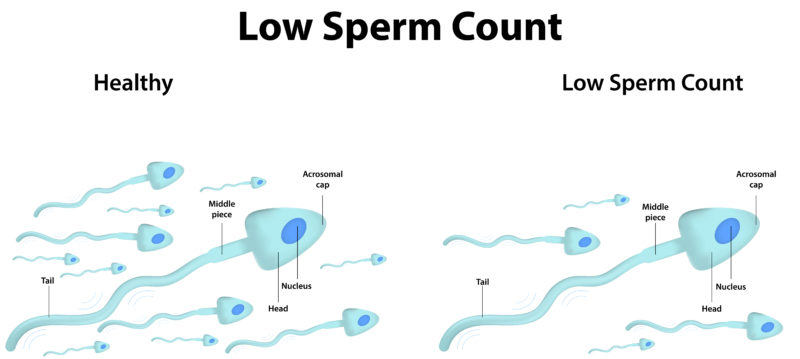If you live in North America, Europe, Australia, or New Zealand, there’s some bad news: a new groundbreaking study has concluded that men from these regions have seen a 52% decline in sperm concentration.
Even worse, the researchers believe that exposure to certain chemicals may be the cause.
Conducted by a team from Hebrew University led by Dr. Hagai Levine, the study also found that overall sperm counts had dropped by 59%.
“The extent of the decline is a heartache,” said Levine, “It’s hard to believe—it’s hard to believe for me.”
The difference between sperm concentration and sperm count is key.
Sperm concentration is determined by the amount of sperm in every milliliter of semen. Sperm count is found by multiplying the sperm concentration by the total amount of semen in an ejaculate.
Researchers first gathered and examined thousands of studies, and then performed their own meta-analysis of 185 studies.
In total, there were 42,935 participants with considerations for “fertility status, age, ejaculation abstinence time, semen collection method, sperm count method and geographic location at the level of continent.”
Samples of sperm were taken over a 40-year period between 1973 and 2011.
The conclusions were startling: sperm concentration plummeted at an average rate of 1.4% per year.
By 2011, the concentration levels in these Western industrialized nations dropped by 52.4%.
Similarly, sperm count fell at 1.6% annually and by the end of 40-years was down to 59.3% of what is once was.

Levine regards a sperm concentration lower than 40 million/ml is “particularly concerning” because, according to his research into the topic, levels below this are associated with a “decreased monthly probability of conception.”
However, if you happen to live in South America, Asia, or Africa, the researchers report good news: there were no significant decline in these regions.
Although past studies suggesting a plummet in male sperm counts were often dismissed due to lack of rigor, Levine says that “now we have a pretty solid answer” as his study used a “more conservative, sophisticated analysis.”
One of the more startling outcomes of Levine’s research is his speculation that being “exposed to many chemicals we’ve never been exposed to before” could be playing a key role in declining sperm counts.
As reported by CNN:
“Previous studies, including his own, show that exposure in utero to endocrine disrupting chemicals can harm male reproductive system development and fertility potential.
“Commonly used chemicals, including pesticides, lead and fire retardants, can increase or decrease production of certain hormones within our bodies and so are said to disrupt our endocrine, or hormone-making, system.”
Indeed, according to Sonya Lunder of the Environmental Working Group, there is research suggesting that endocrine-disrupting chemicals could have an impact on women’s capacity to birth healthier babies.
Though, Lunder empahsized that “there’s not one route to reduction in sperm quality and sperm count for men. By all accounts, people assume there are multiple factors at work.”
Sources:
CNN
Oxford Academic
NCBI


